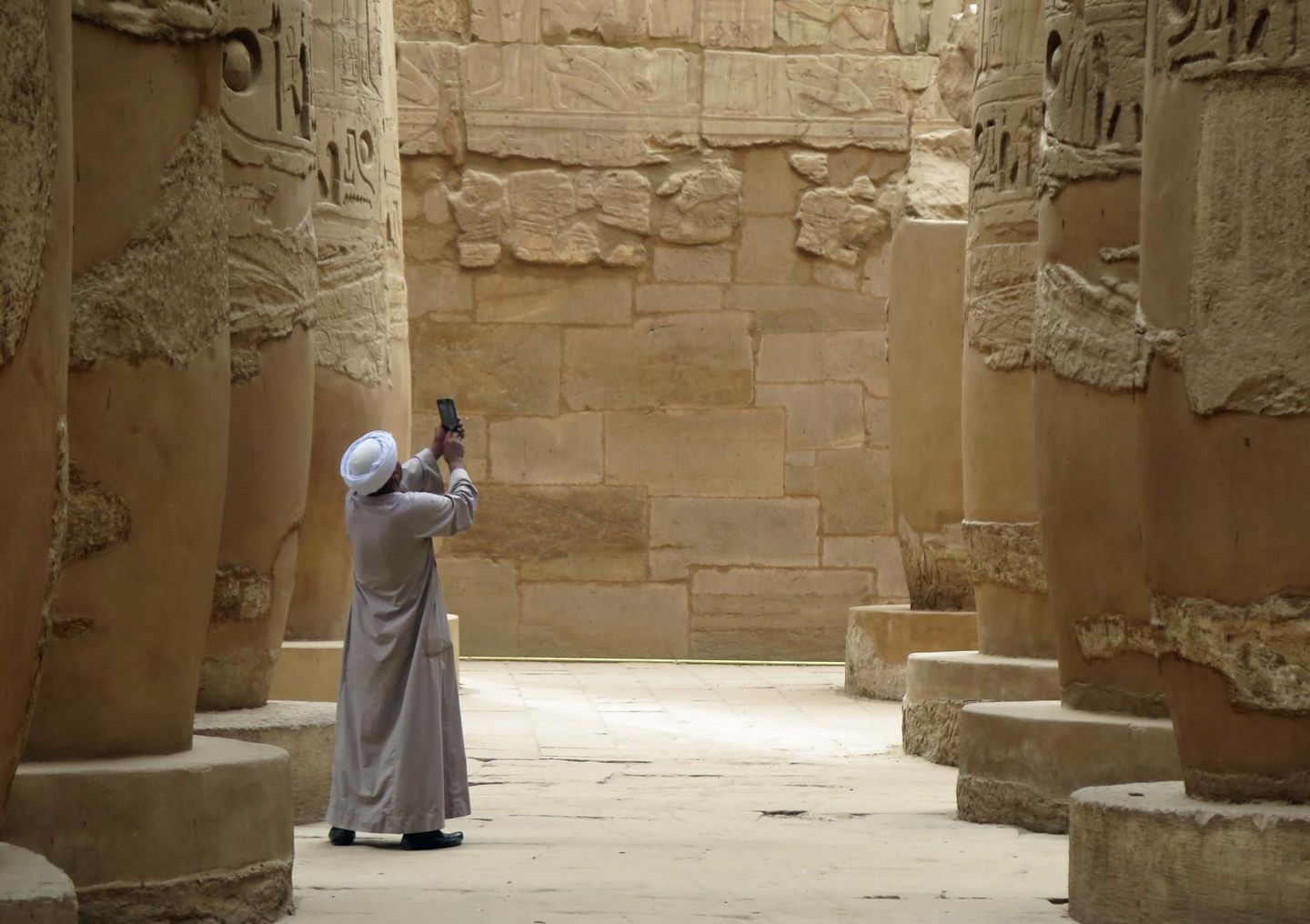Luxor
VALLEY OF KINGS
The Valley of the Kings was the royal cemetery for 62 Pharaohs and is located on the west bank at Luxor. The only entrance to this place was a long narrow winding path. This was a secret place, where sentries were placed at the entrance of the Valley, as well as along the top of the hills, in the hopes of discouraging tomb robbers, who had in the past plundered all royal tombs, including the treasures of the Pyramids! Some thefts were probably carefully planned, but others were spur of the moment, as when an earlier tomb was accidentally discovered while cutting a new one and workmen took advantage of the opportunity. This may have happened when KV 46 was found during the cutting of KV 4 or KV 3 nearby. The tombs in the Valley range from a simple pit (e.g. KV 54), to a tomb with over 121 chambers and corridors (KV 5).
Hatshepsout Temple
The Temple of Deir El-Bahri is one of the most characteristic temples in the whole of Egypt, due to its design and decorations. It was built of limestone, not sandstone like most of the other funerary temples of the New Kingdom period. It is thought that Senimut, the genius architect who built this Temple, was inspired in his design by the plan of the neighboring mortuary Temple of the 12th Dynasty King, Neb-Hept-Re. The Temple was built for the great Queen Hatshepsut (18th Dynasty), to commemorate her achievements and to serve as a funerary Temple for her, as well as a sanctuary of the God, Amon Ra.
Luxor Temple
Luxor Temple, or The Temple of Luxor, is among the most beautiful Temples in Egypt. It was known in the New Kingdom period as Ipt-Rsyt, which means the southern shrine. This was to differentiate between this Temple and Karnak Temple, which was the northern house of Amon Ra. Amenhotep III built Luxor Temple. The architect and overseer of the works of construction was the genius Amenhotep, son of Habu. The Temple run close and parallel to the river Nile from north to south. It was constructed on the site of a small Temple of Amon, built by kings of the 12th dynasty. At the time of Amenhotep III the Temple was only 190m in length and 55m in width. Basically, Luxor Temple was consecrated to Amon Ra in his fertility aspect.
Kom Ombo Temple
The Location of the Temple of Kom Ombo. The small town of Kom Ombo is situated on the East side of the Nile, 45 kilometers to the North of the city of Aswan, about 800 kilometers to the South of Cairo, the capital of Egypt. Surrounded by fields of sugarcane and corn, Kom Ombo is a pleasant agriculture town that now hosts many Nubians that were displaced after when the water of the Nile flooded their hometowns after the construction of the Nasser Lake. The imposing Greco Roman Temple of Kom Ombo is featured with its marvelous setting directly overlooking the Nile. This is why a visit to the temple is usually included in all the itineraries of Nile cruises that sail from Luxor to Aswan and vice versa.
Karnak Temple
The Temple of Karnak is the largest Temple in the World! The complex contains a group of Temples such as the Great Temple of Amon Ra, The Temple of Khonso, The Ipt Temple, The Temple of Ptah, the Temple of Montho and the Temple of the God Osiris. A 20m high, mud brick enclosure wall, surrounded all of these buildings.
This great Temple of Amon Ra was known during the Middle Kingdom period as Ipt-Swt, which means the Selected Spot. It was also called Pr-Imn, which means the House of Amon. The name Al-Karnak in Arabic was derived from Karnak, which means fortified village, probably because the Arabs found many Temples and buildings in the area when they entered it for first time
Edfu Temple
Consists of traditional elements of Egyptian Temples of the New Kingdom, together with a few Greek elements, such as the Mamisi, which is situated to the west of the main entrance of the Temple (Mamisi means “house of the divine birth”). It consists of an entrance, a court and chapel. The walls of the mamisi are decorated with scenes showing the story of the divine birth of Horus the child, in the presence of the Goddess Hathor, the God Khenoum and other deities who were concerned with pregnancy and birth. The Temple has a Pylon that is considered the highest among surviving Temples in Egypt today. It is 37m high and is decorated with battle scenes, representing King Ptolemy VIII smiting his enemies before the God Horus.




